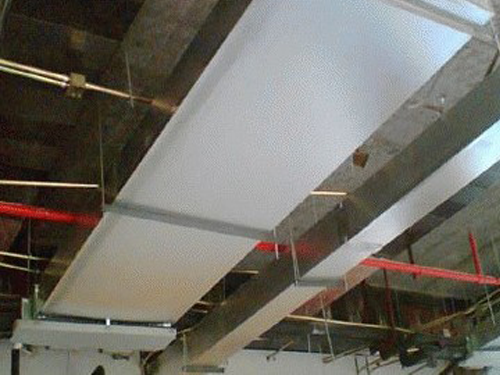山东通风管道如何降低排烟时的热量损耗?
来源:http://www.jntfgd.com 日期:2025-05-30 发布人:创始人
在探讨如何降低通风管道排烟时的热量损耗时,我们首先需要理解这一问题的核心——热量在传输过程中的无谓流失,不仅意味着能源的浪费,还可能影响整个排烟系统的效率与安全性。要解决这个问题,我们需要从多个维度出发,结合实际工程经验与创新思维,寻找切实可行的优化方案。
When exploring how to reduce heat loss during ventilation duct exhaust, we first need to understand the core of this issue - the meaningless loss of heat during transmission, which not only means energy waste but may also affect the efficiency and safety of the entire exhaust system. To solve this problem, we need to start from multiple dimensions, combine practical engineering experience and innovative thinking, and find practical and feasible optimization solutions.
材料的选择是降低热量损耗的基础。传统的金属管道,如镀锌钢板,虽然具有良好的机械强度和耐腐蚀性,但其较高的导热系数意味着在排烟过程中,大量热量会通过管壁迅速散失到周围环境中。因此,探索新型低导热材料的应用显得尤为重要。例如,某些复合材料或特殊涂层,能够在保持管道结构强度的同时,显著降低热传导效率。这些材料通过内部微结构的优化或添加隔热成分,有效减缓了热量传递的速度,从而减少了热量损耗。
The selection of materials is the foundation for reducing heat loss. Traditional metal pipes, such as galvanized steel plates, have good mechanical strength and corrosion resistance, but their high thermal conductivity means that a large amount of heat will quickly dissipate into the surrounding environment through the pipe wall during the smoke exhaust process. Therefore, exploring the application of new low thermal conductivity materials is particularly important. For example, certain composite materials or special coatings can significantly reduce thermal conductivity efficiency while maintaining the structural strength of pipelines. These materials effectively slow down the speed of heat transfer and reduce heat loss by optimizing their internal microstructure or adding insulation components.
管道的设计同样不容忽视。合理的管道布局能够最大限度地减少不必要的热量损失。在规划排烟系统时,应尽量避免过长的管道和复杂的弯曲结构,因为这些都会增加风阻,导致风速下降,进而使得热量在管道内停留时间延长,增加散失的风险。同时,通过计算流体动力学(CFD)等先进工具进行模拟优化,可以精确预测不同设计方案下的热量分布和损失情况,为设计决策提供科学依据。
The design of pipelines cannot be ignored either. A reasonable pipeline layout can minimize unnecessary heat loss to the greatest extent possible. When planning a smoke exhaust system, it is advisable to avoid excessively long pipes and complex curved structures as they increase wind resistance, leading to a decrease in wind speed and prolonging the residence time of heat in the pipes, thereby increasing the risk of loss. At the same time, advanced tools such as Computational Fluid Dynamics (CFD) can be used for simulation optimization to accurately predict the heat distribution and loss under different design schemes, providing scientific basis for design decisions.
除了材料和设计,保温措施也是降低热量损耗的关键环节。在管道外部添加一层高效的保温层,如岩棉、玻璃棉或气凝胶等,能够有效隔绝管道内外环境的热交换。这些保温材料具有极低的导热系数和良好的隔热性能,能够在管道表面形成一道稳定的热屏障,显著减少热量向周围环境的散失。此外,保温层的厚度和密度也需要根据具体工况进行精确计算,以确保在达到最佳隔热效果的同时,不会对管道的结构安全和使用寿命产生负面影响。
In addition to materials and design, insulation measures are also a key factor in reducing heat loss. Add an efficient thermal insulation layer outside the pipeline, such as rock wool, glass wool or aerogel, which can effectively isolate the heat exchange between the internal and external environment of the pipeline. These insulation materials have extremely low thermal conductivity and good insulation performance, which can form a stable thermal barrier on the surface of the pipeline, significantly reducing the loss of heat to the surrounding environment. In addition, the thickness and density of the insulation layer also need to be accurately calculated according to specific working conditions to ensure that the optimal insulation effect is achieved without negatively affecting the structural safety and service life of the pipeline.

智能控制系统的引入,为降低热量损耗提供了新的思路。通过安装温度传感器、流量计等监测设备,可以实时获取排烟系统的运行状态数据。基于这些数据,智能控制系统能够自动调节风机的转速和排烟口的开度,确保排烟过程始终处于最优状态。例如,在排烟需求较低时,系统可以降低风机转速,减少不必要的能量消耗;在排烟需求较高时,系统则能够迅速提升风机转速,保证排烟效率。这种动态调节的方式,不仅能够有效降低热量损耗,还能够提高整个排烟系统的能效比。
The introduction of intelligent control systems provides new ideas for reducing heat loss. By installing monitoring devices such as temperature sensors and flow meters, real-time operational status data of the smoke exhaust system can be obtained. Based on these data, the intelligent control system can automatically adjust the speed of the fan and the opening of the exhaust outlet to ensure that the exhaust process is always in the optimal state. For example, when the demand for smoke exhaust is low, the system can reduce the fan speed to minimize unnecessary energy consumption; When there is a high demand for smoke exhaust, the system can quickly increase the fan speed to ensure smoke exhaust efficiency. This dynamic adjustment method can not only effectively reduce heat loss, but also improve the energy efficiency ratio of the entire exhaust system.
降低通风管道排烟时的热量损耗是一个系统工程,需要从材料选择、管道设计、保温措施和智能控制等多个方面入手。通过综合运用这些策略,我们不仅能够显著减少能源浪费,提高排烟系统的效率,还能够为构建绿色、低碳的建筑环境贡献一份力量。
Reducing heat loss during ventilation duct exhaust is a systematic project that requires multiple aspects such as material selection, duct design, insulation measures, and intelligent control. By comprehensively applying these strategies, we can not only significantly reduce energy waste and improve the efficiency of smoke exhaust systems, but also contribute to building a green and low-carbon building environment.
本文由山东通风管道友情奉献.更多有关的知识请点击:http://www.jntfgd.com真诚的态度.为您提供为全面的服务.更多有关的知识我们将会陆续向大家奉献.敬请期待.
This article is a friendly contribution from Shandong Ventilation Duct For more information, please click: http://www.jntfgd.com Sincere attitude To provide you with comprehensive services We will gradually contribute more relevant knowledge to everyone Coming soon.
上一篇:通风管道常用材料的耐久性如何比较本站图片均由网站所有方提供,部分图片来源于网络,如有任何疑问请及时与我们联系,未经沟通本站不承担相关法律责任!